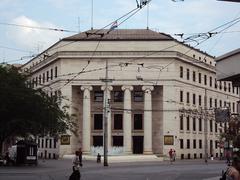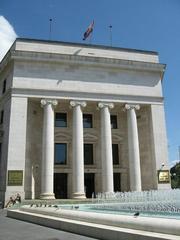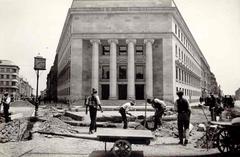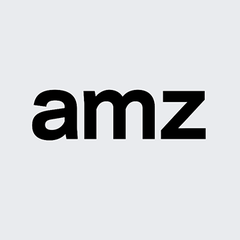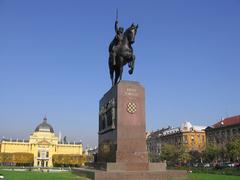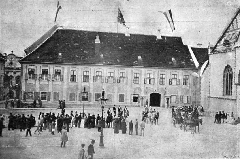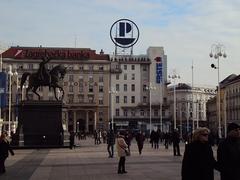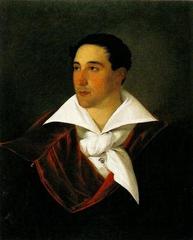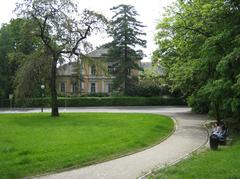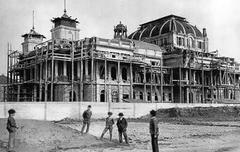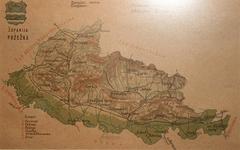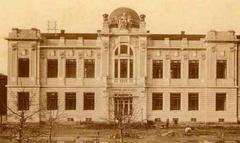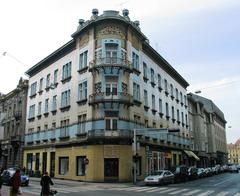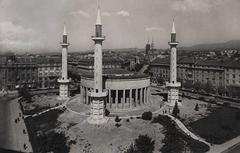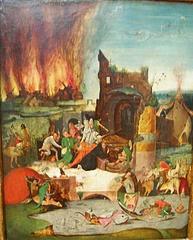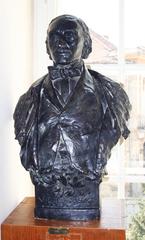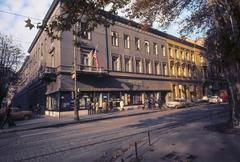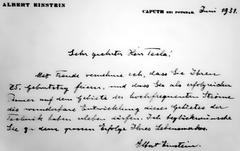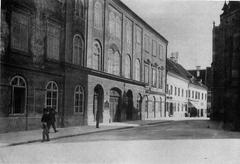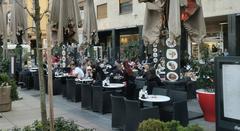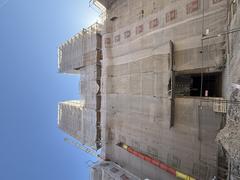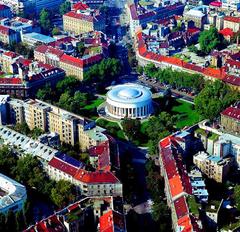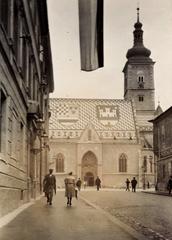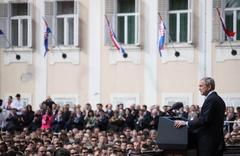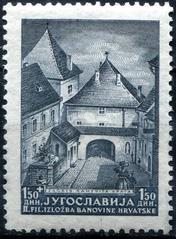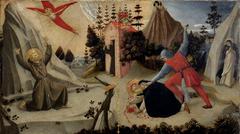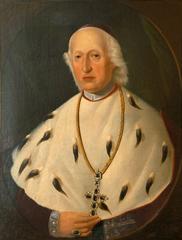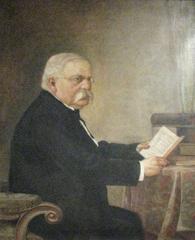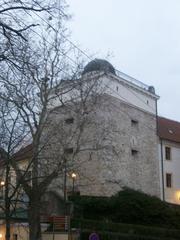
Croatian National Bank Visiting Hours, Tickets, and Zagreb Historical Sites Guide
Date: 14/06/2025
Introduction
The Croatian National Bank (CNB), located in the heart of Zagreb, represents more than just Croatia’s central banking authority—it stands as a testament to the nation’s economic evolution, from its independence to its integration into the European monetary system. With its striking neoclassical architecture and the newly established Moneterra Money Museum, the CNB offers visitors a multifaceted experience, combining history, education, and interactive exhibits. This comprehensive guide will provide you with up-to-date details on visiting hours, free ticketing at Moneterra, accessibility, tour options, currency exchange services, and tips for exploring nearby Zagreb historical sites. Whether you are a history enthusiast, finance student, or simply an inquisitive visitor, this guide ensures your experience is smooth, informative, and memorable.
For further details and official updates, consult the Croatian National Bank Official Website and the Moneterra Money Museum.
Table of Contents
- Overview of the Croatian National Bank
- A Brief History of the CNB
- Moneterra – The Money Museum: What to See
- Visitor Information: Hours, Tickets, Tours
- Currency Exchange Services
- Nearby Zagreb Attractions
- FAQs
- Visitor Tips and Accessibility
- Visuals and Media Recommendations
- Conclusion and Call to Action
- References and Official Sources
Overview of the Croatian National Bank
The Croatian National Bank (CNB; Hrvatska narodna banka, HNB) is both a financial institution and an architectural landmark in central Zagreb. Established as Croatia’s central bank in 1990, the CNB has overseen the nation’s transition from the Yugoslav dinar to the Croatian kuna, and most recently, its move to the euro in 2023. The CNB is also home to Moneterra, the Money Museum, which offers a unique and interactive journey through Croatia’s monetary history, central banking, and the future of finance. (Wikipedia - Croatian National Bank) (Moneterra Money Museum)
A Brief History of the CNB
- Foundation and Mission: Established in December 1990 as an autonomous institution under the Croatian Constitution, the CNB’s primary mandate is to maintain price stability and financial system security. It operates independently from commercial entities and is wholly owned by the Republic of Croatia. (ECBS)
- Currency Transition: Initially responsible for issuing the Croatian dinar (1991–1994), the CNB introduced the kuna in 1994, stabilizing Croatia’s economy. In 2023, Croatia adopted the euro, with the CNB now part of the Eurosystem and aligned with the European Central Bank. (Wikipedia)
- Architectural Significance: The CNB headquarters, designed by Viktor Kovačić and opened in 1927, exemplifies neoclassical architecture and has served as a financial hub through multiple state changes. (Wikipedia)
Moneterra – The Money Museum: What to See
Moneterra is Zagreb’s premier destination for understanding the evolution of money and the Croatian financial system. Opened in 2024, it features state-of-the-art exhibitions and interactive learning zones, making it suitable for all ages. (Moneterra Official Website)
Museum Highlights
-
The Basics of Money
Explore the development of money—from barter to digital currencies—through hands-on exhibits and multimedia displays. -
Banks, Central Bank, and Me
Learn about the role of banks, the CNB’s responsibilities, and how central banking impacts your everyday life. -
Periods of Financial Stress
Interactive games and case studies help demystify the causes and effects of financial crises in Croatia and worldwide. -
The Future of Money and Finance
Delve into digital currencies, fintech, and how technology is shaping the future of money.
Interactive Features
- Design Your Own Banknote: Create a souvenir banknote with your portrait.
- Games and Quizzes: Test your financial knowledge in a fun, educational environment.
Visitor Information: Hours, Tickets, Tours
Main CNB Building
- Location: Trg hrvatskih velikana 3, 10000 Zagreb
- Public Access: The building functions as a working institution and is not open for general public visits. Educational group tours may be arranged by prior request.
(HNB.hr)
Moneterra Money Museum
- Address: Augusta Cesarca 10 (Europski trg), Level -1, 10000 Zagreb
- Opening Hours:
- Monday to Friday: 9:00 AM – 7:00 PM
- Saturday: 10:00 AM – 2:00 PM
- Closed on Sundays and national holidays
- Admission: Free of charge
- Contact: +385 1 4564 555 | [email protected]
- Guided Tours:
- Available Monday to Friday, 9:00 AM – 5:00 PM
- Groups must book at least 14 days in advance
- Tours in Croatian and English; inquire for other languages
Currency Exchange Services
Following Croatia’s adoption of the euro, the CNB remains the only official institution for exchanging old kuna banknotes and coins for euros. This service is particularly valuable for tourists and collectors. Check the official CNB website for details on procedures and opening hours.
Nearby Zagreb Attractions
Maximize your visit by exploring these nearby sites:
- Ban Jelačić Square: Zagreb’s central square, ideal for shopping and people-watching.
- Zagreb Cathedral: A Gothic masterpiece and city icon.
- Dolac Market: Experience local produce and crafts.
- Croatian Museum of Naive Art and Zagreb City Museum: Both within walking distance and rich in cultural history.
(Visit Croatia – Museums in Zagreb)
FAQs
Q: What are the Croatian National Bank visiting hours?
A: The main CNB building is not open for casual visits. Moneterra Money Museum is open Monday–Friday 9:00 AM–7:00 PM, Saturday 10:00 AM–2:00 PM, closed Sundays and holidays.
Q: Are there Moneterra Money Museum tickets?
A: Admission is free for all visitors.
Q: How do I book a guided tour?
A: Group tours must be booked at least 14 days in advance via the Moneterra website.
Q: Is the museum accessible for visitors with disabilities?
A: Yes, Moneterra offers full wheelchair access and elevator facilities.
Q: Can I exchange old kuna notes at the CNB?
A: Yes, the CNB is the only official exchanger of old kuna notes and coins for euros.
Q: Can I take photos inside the museum?
A: Non-flash photography for personal use is generally allowed. Contact staff for professional photography permissions.
Visitor Tips and Accessibility
- Getting There: Moneterra is easily accessible by tram (stops: “Trg hrvatskih velikana” or “Europski trg”), foot, taxi, or ride-share.
- Best Times to Visit: Weekday afternoons are typically quieter. Saturdays may be busier due to shorter hours.
- Facilities: Restrooms and storage lockers are available. The museum is suitable for families, school groups, and individuals.
- Language: Most exhibits are bilingual (Croatian and English). Staff can provide additional information and guidance.
Visuals and Media Recommendations
Enhance your experience by browsing official photos of the CNB’s neoclassical façade, Moneterra’s interactive exhibits, and Zagreb’s historic sites. Use alt text such as “Moneterra Money Museum interactive display” or “Croatian National Bank exterior.” Virtual tours and high-resolution images are available on the Moneterra website.
Conclusion and Call to Action
The Croatian National Bank and Moneterra Money Museum offer a unique opportunity to explore Croatia’s economic history and cultural heritage. With free admission, engaging exhibits, and a prime location near Zagreb’s top landmarks, this visit is a must for anyone interested in finance, history, or architecture. Plan ahead by checking official websites for the latest information, booking group tours in advance, and considering the Audiala app for curated travel insights. Discover the story of Croatia’s monetary evolution and make the most of your Zagreb adventure!
References and Official Sources
- Croatian National Bank Official Website (https://www.hnb.hr/en)
- Moneterra Money Museum
- Wikipedia - Croatian National Bank
- European Central Bank’s Overview of Croatian National Bank
- Visit Croatia – Museums in Zagreb
- PSE Journal on Interest Rates and Government Bonds in Croatia
- InfoZagreb – Moneterra Money Museum
- HNB.hr – Visitor Information
